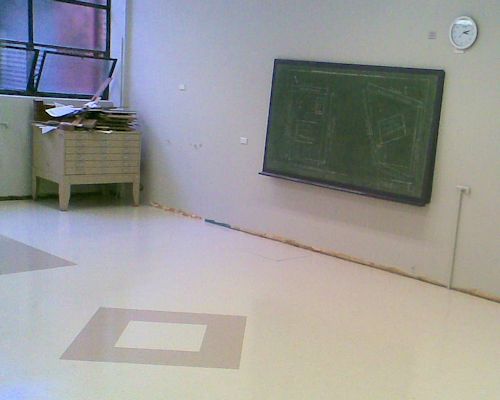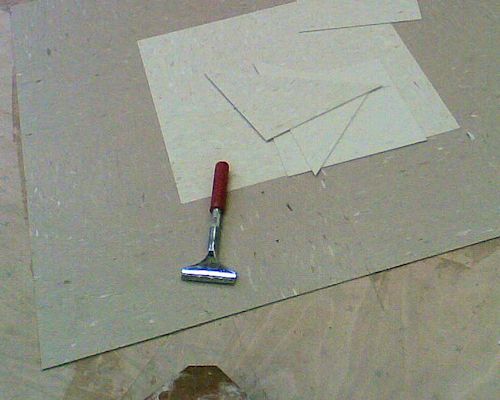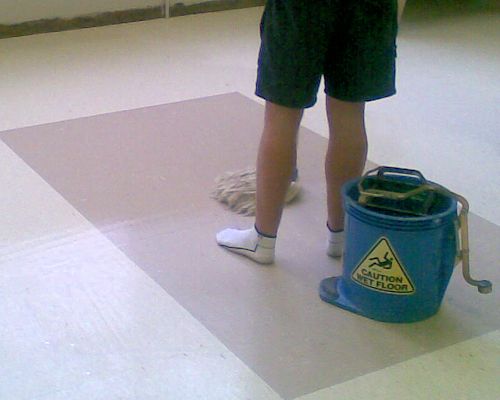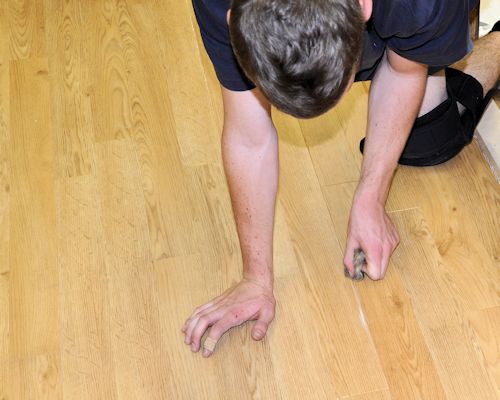Finishing the job
 Audio for slide 2 (mp3 |6|KB)
Audio for slide 2 (mp3 |6|KB)
Protecting the new floor
Depending on the type of worksite you're at, you might need to put up signs or barriers to stop people from entering the area until the adhesive has fully cured.
In high traffic areas you can also put a protective covering over the floor to minimise the chance of damage.
If you do, make sure the covering doesn't have a rubber or latex backing that might discolour the floor surface.

 Audio for slide 3 (mp3 |6|KB)
Audio for slide 3 (mp3 |6|KB)
Slide the first board under the object as you lift it off the floor one side at a time.
Then put another board beside the first one and push the object over the boards.
Don't roll or drag the object directly across the new flooring material.

 Audio for slide 4 (mp3 |6|KB)
Audio for slide 4 (mp3 |6|KB)
Even objects on wheels or casters need to be pushed across wood panels, because if the adhesive isn't fully cured they'll leave grooves in the floor surface.
Commercial floors should be protected from rolling loads for at least 72 hours after the installation is finished.

 Audio for slide 5 (mp3 |6|KB)
Audio for slide 5 (mp3 |6|KB)
Housekeeping
Take all your rubbish and materials with you, except for left-over tiles that might be useful to the client for future repairs.
Be particularly careful with hazardous products that need to be disposed of in an approved way.
You'll find more details on this topic in the unit: Working sustainably.
Don't put materials or rubbish in doorways or other access ways, because they'll probably get knocked over and end up being a trip hazard.
Keep everything well stacked and out of everyone's way.

 Audio for slide 6 (mp3 |6|KB)
Audio for slide 6 (mp3 |6|KB)
Maintenance
It's important to give the floor a good clean once the job is completed.
You need to make sure that there is no grit left behind that could scratch the floor and no marks or dirt that might look unsightly.
However, you must wait 72 hours before using a wet mop, to make sure the adhesive has had time to set.
Also be careful not to over-wet the floor in its initial clean.


Learning activity
Audio 7 (mp3 |6|KB)Choose a particular brand of vinyl tile and do some research on the manufacturer's guidelines relating to cleaning and maintenance. Provide the following details:
- Vinyl tile product name and manufacturer.
- Guidelines for cleaning and polishing the flooring immediately after installation.
- Guidelines for on-going periodic maintenance.






